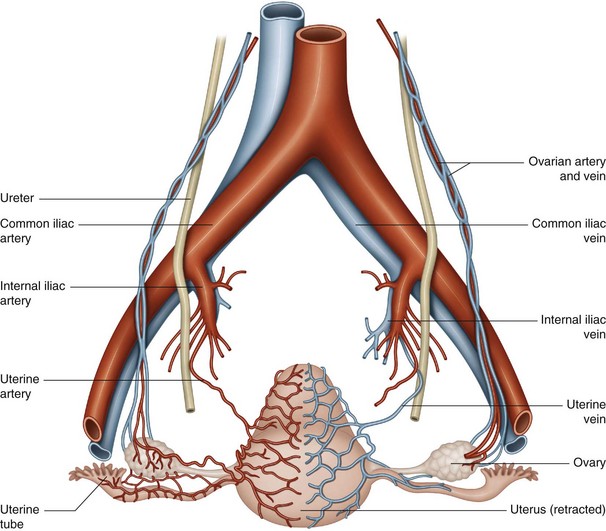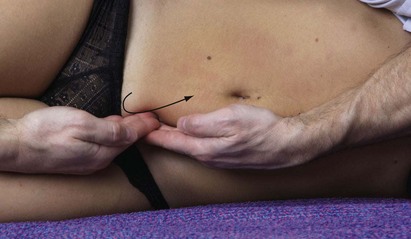32 Uterine vessels
32.1 Anatomy
32.1.1 Uterine artery
Course
The uterine artery (Fig. 32.1) arises from the internal iliac artery and travels caudally and anteriorly to reach the uterus a little above the uterine cervical junction.
Collaterals
Among the numerous arterioles arising from the uterine artery, we cite branches for the:
32.2 Manipulation of the uterine artery
32.2.1 Manipulation in lateral decubitus
Position
A bilateral technique, the patient is in either left or right lateral decubitus, legs slightly flexed. Position yourself behind the patient (Fig. 32.2).
32.2.2 Manipulation in decubitus
Position
The patient has a soft pillow under the lumbar region, with both hands resting on the belly, legs flexed (see Fig. 32.3). Position yourself to the side of the patient, with your hands against the medial aspect of the iliac bone.
Stay updated, free articles. Join our Telegram channel

Full access? Get Clinical Tree











